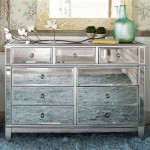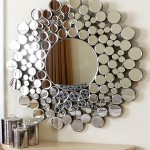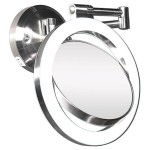How Do Mirrors Make a Room Look Bigger? Physics Explains
Mirrors have been used for centuries to enhance the visual appeal of spaces, and their ability to create the illusion of a larger room is a well-known phenomenon. The science behind this visual trick lies in the principles of reflection and our perception of space. By understanding the physics of light and how it interacts with mirrors, we can grasp the reason behind their space-expanding properties.
Reflection and the Illusion of Depth
Mirrors work by reflecting light. When light strikes a smooth, reflective surface, it bounces back at the same angle it hit the surface. This principle is known as the Law of Reflection. When a mirror is placed in a room, it reflects the surrounding environment, creating a virtual image that appears to be behind the mirror's surface. This image is essentially a mirrored copy of the actual space, creating the effect of depth and extending the perceived size of the room.
The human brain interprets the reflected image as part of the real space, extending the visual field beyond the physical boundaries of the room. This illusion of depth is particularly effective when a mirror is strategically placed opposite a window or a light source. The reflected light creates a sense of continuation, making the room seem to stretch further than it actually does.
Multiple Reflections and Space Expansion
Mirrors can also create a sense of infinite space by reflecting one another. When two mirrors are placed facing each other, light bounces back and forth between them, creating multiple reflections. Each reflection appears further away than the last, resulting in an apparent expansion of the space. This principle is used in optical illusions, such as the "infinite corridor" effect, where a series of mirrors creates a seemingly endless passage.
The number of reflections and the perceived size of the room depend on the distance between the mirrors. The closer the mirrors are, the more reflections are visible and the greater the illusion of space. However, as the distance between the mirrors increases, the reflections become fainter and eventually disappear, diminishing the effect.
Strategic Placement for Maximum Impact
The placement of a mirror is crucial in maximizing its space-expanding effect. Mirrors placed strategically opposite windows or large, open areas can effectively double the perceived size of the space. Placing a mirror on a wall adjacent to a doorway can create the illusion of a wider passage, while a mirror placed above a fireplace can enhance the perceived height of the room.
Mirrors can also be used to highlight specific features or create focal points in a room. A strategically placed mirror can reflect a beautiful piece of furniture, a stunning artwork, or a captivating view, drawing the eye to these elements and enhancing their visual impact.
In conclusion, mirrors are powerful tools for manipulating our perception of space. By understanding the principles of reflection and how our brains interpret visual information, we can use mirrors effectively to create the illusion of a larger, more spacious room. From strategic placement opposite windows to creating infinite reflection effects, the possibilities for enhancing the visual appeal of any space are endless.

10 Ways To Make A Room Look Bigger With Mirrors Bark And Chase

10 Ways To Make A Room Look Bigger With Mirrors Bark And Chase
How Should You Place Mirrors To Make A Room Look Bigger Quora
How Can A Plane Mirror Make Room Appear Wider Quora

10 Ways To Make A Room Look Bigger With Mirrors Bark And Chase

10 Ways To Make A Room Look Bigger With Mirrors Bark And Chase
How Should You Place Mirrors To Make A Room Look Bigger Quora

10 Ways To Make A Room Look Bigger With Mirrors Bark And Chase

10 Ways To Make A Room Look Bigger With Mirrors Bark And Chase

7 Ways Mirrors Can Make Any Room Look Bigger Sonoma








